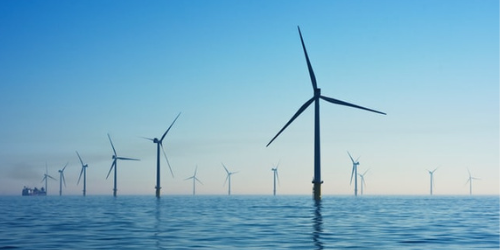Offshore wind farms are one of the most effective clean energy solutions that have been adopted by nations around the globe. Why then has the US fallen so far behind the pack?
Currently, there is only one offshore wind farm commercially operating in the US - the Block Island Wind Farm in Rhode Island, which opened in December 2016 with the capacity to generate enough energy to power 17,000 homes.
Despite having only one offshore wind farm in the US, a $70 billion market is on the way. So, is the tide turning for the US to adopt an offshore wind farm evolution?
The potential of offshore wind energy
According to the Department of Energy (DOE) and The National Renewable Energy Laboratory, offshore wind has the potential to generate over 2,000 GW (Gigawatts) of electricity per year - nearly twice as much as the US currently uses.
With higher wind speeds offshore than on land, offshore wind farms can produce significantly more energy than an onshore equivalent. Putting this into perspective, one rotation of a 7MW (Megawatt) turbine can power a home for 24 hours - as used in the UK. Additionally, wind farms have less impact on people and the land, making them less controversial than onshore.
We’re in the midst of an international offshore boom, according to the Global Wind Energy Council (GWEC). But offshore wind farms are not a new concept, and other parts of the world like Europe and China adopted them years ago. So why has it taken this long for the US to take notice of this renewable energy solution? And why is now the time for an evolution of US offshore wind farms?
Biden’s pledge to green energy
In 2015, the US and 195 other nations signed up for the Paris Agreement. A treaty committed to combating climate change and reducing the planet's temperature to well below 2°C, ideally to 1.5°C by 2030.
However, in June 2017, the Trump administration announced that the US would be pulling out of the Paris Agreement, eventually doing so in 2020 - a decision condemned by environmental and public health activists and experts.
At this time, Trump dismissed the need for offshore wind farms. Trump claimed offshore wind farms were pricey, unreliable and that it "kills all the birds" - something the Energy Department announced it would spend $11.5 million to study the risks offshore wind developments may pose to birds.
Ultimately this would put the US, the second-largest greenhouse gas emitter in the world, further behind their pursuit to become carbon neutral and reap the rewards of offshore wind energy.
Soon after Joe Biden became the 46th President of the United States, in January 2021, the US rejoined the Paris Agreement, and the Biden Administration committed to giving offshore wind farming the boost it needed.
President Biden pledged his allegiance to the clean and green energy movement. The President set a goal for the nation to achieve net-zero emissions by 2050. With this, Biden has set an offshore wind energy goal for the US to generate 30 GW (30,000 MW) of electricity by 2030 and 110 GW (110,000 MW) by 2050.
Biden's ambitious offshore wind MW project is not only spearheading an evolution of renewable energy but has the potential to benefit the US economically.
What the future holds for US offshore wind farms
The offshore wind industry in the US is indeed in the middle of an evolution and will continue to evolve in the coming years. By the end of President Biden’s first term, the US aims to approve 16 full-scale offshore wind farms so that by 2030 there will be enough offshore energy generated to power 10 million US homes.
The Bureau of Ocean Energy Management (BOEM) said it would review roughly 30 million acres of federal waters, from the east coast to the north sea, for potential offshore wind farm locations. This joint venture to support Biden's MW offshore wind project will mean that by the early 2030s, we will likely see offshore wind turbines operating in the Gulf of Mexico and the Atlantic and Pacific oceans.
For context, the five offshore wind turbines operating at the US' sole offshore wind farm in Rhode Island generates around 5 GW (5,000 MW). Therefore, the upscale to 30 GW by 2030 is enormous. An upscale with the potential to present a $109 billion total investment opportunity to businesses in the offshore wind power supply chain over the next decade.
As a result of increased investment and scale-up in offshore wind energy, job opportunities will follow suit. Out of the 600-700 wind turbines required, the White House and Transporation Department predict there will be around 80,000 offshore wind-related jobs created by 2030.
Although the US is far from being a leader in offshore wind, a transformation is happening. With the Biden Administration making waves within this space, we are clearly experiencing an evolution of US offshore wind farms.


